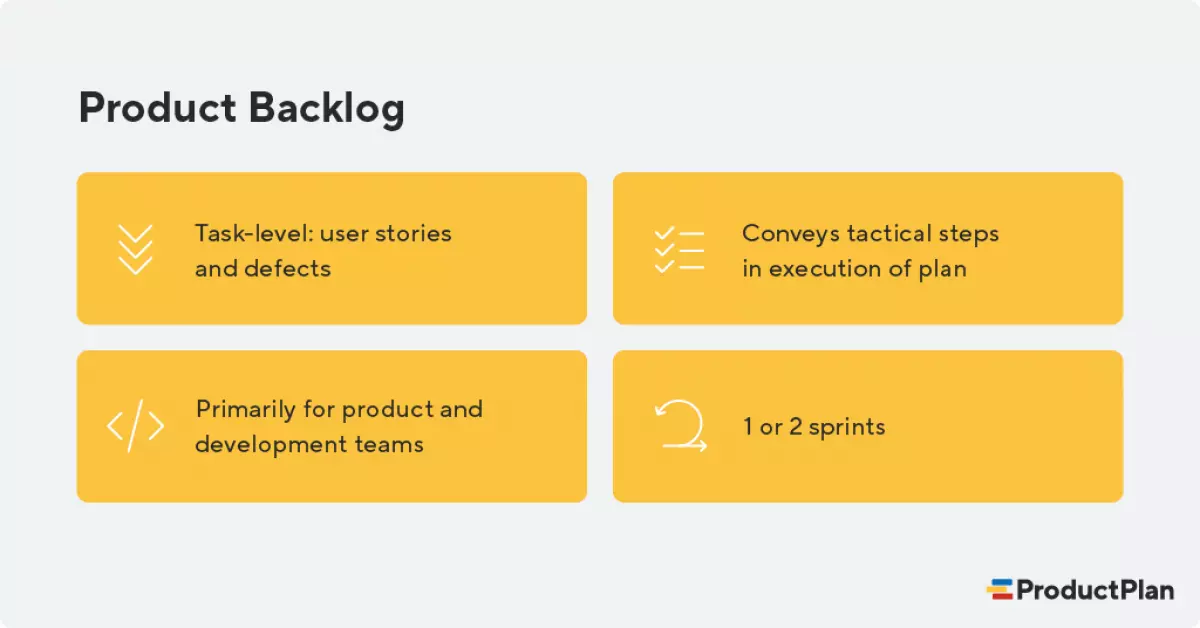A backlog, or "danh sách công việc chưa hoàn thành," is an essential tool in project management that helps prioritize tasks and support the overall strategic plan. It serves as a repository of items that need to be completed, such as user stories, bug fixes, and changes to existing functionality.
Why is it Important When Using Agile?
In the agile development framework, backlogs play a crucial role in delivering value to customers quickly. By having a prioritized list of tasks, teams can stay focused on delighting customers and achieving product priorities. Sprint planning sessions heavily rely on the backlog to scope, size, and schedule development tasks. It ensures that the team has a clear understanding of what needs to be done next.
Why is the Backlog Important to Product Managers?
For product managers, backlogs provide a bridge between high-level objectives and task-level details. They spend time conducting market research, studying usage data, and gathering insights from sales teams and customers. The backlog helps translate these learnings into actionable items for the development team. With a well-maintained backlog, product managers can ensure that the product's development keeps moving forward.
 Caption: The product backlog serves as a prioritized list of actionable items for the team.
Caption: The product backlog serves as a prioritized list of actionable items for the team.
What is the Purpose of a Backlog?
A backlog serves several essential functions for an organization:
1. Provide a single source of truth for the team's planned work.
Working from a product backlog eliminates the need to search for tasks or wonder about their priority. It represents an agreed-upon plan for the team's next steps.
2. Facilitate team discussion.
Backlogs allow cross-functional teams to discuss and prioritize work. They foster conversations about dependencies, conflicts, and interdependencies. Items placed at the bottom of the backlog can serve as a starting point for further discussion.
3. Make it easier to assign work.
A backlog simplifies task assignment during sprint planning sessions. By already having tasks ordered by priority, the team can easily assign the highest-priority items to the most suitable team members.
What is a Product Backlog?
The product backlog encompasses all potential items under consideration for a product. It ranges from minor tweaks to major additions. Some items make it to upcoming sprints, while others remain in the backlog until new priorities arise. The product backlog serves as a repository of ideas, feedback, and future possibilities for the product.
What is Sprint Backlog?
In agile development, product teams divide their work into sprints, which are short development time blocks. The sprint backlog is generated during sprint planning meetings, where tasks are pulled from the larger product backlog. The sprint backlog contains the tasks that the team will work on during the sprint.
Why Is It Important to Manage Your Backlog?
The usefulness of a backlog lies in its accuracy, volume, and organization. It enables the product team to prioritize future work effectively. However, if the backlog becomes too large or lacks organization, it can turn into an unsalvageable mess. Great ideas, customer requests, and technical debt issues can get lost in a cluttered backlog. To maintain order, implementing a structured system for tagging, categorizing, and organizing backlog items is crucial. This allows product managers to quickly sort and prioritize tasks based on themes, strategic goals, and critical functional areas.
What is Backlog Grooming?
Regular backlog grooming sessions are best practice. During these sessions, product managers review items, break down complex tasks, clarify any issues, and ensure that user stories meet the team's criteria for "ready." Backlog grooming helps keep the backlog organized, up-to-date, and aligned with the latest product and business strategy.
What is the Relationship Between Backlogs and Roadmaps?
Backlogs represent everything the team could build, while roadmaps indicate what the organization has prioritized. A roadmap provides a high-level view of strategic themes and their relative prioritization and timing. The backlog serves as a source for specific development items, ensuring that they align with the objectives and goals of each theme. With a purpose-built roadmap tool, stakeholders can drill down into the details of each backlog item, providing context within the larger strategic objectives and timeline of the overall product roadmap.
By understanding the importance of backlogs and effectively managing them, product teams can ensure that their development efforts align with strategic goals and deliver value to customers.
















